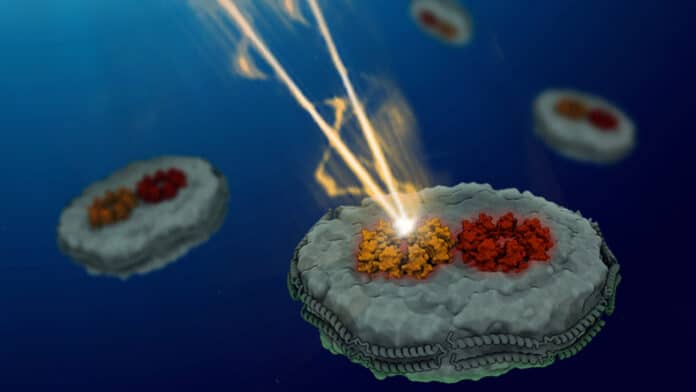In photosynthesis, the reaction center, which starts the subsequent biological reactions, is reached by absorbed light energy transferring through a network of antenna proteins with near-unity quantum efficiency. Understanding transport requires resolving energy transfer between proteins, but this crucial step has been experimentally inaccessible.
A recent discovery by MIT scientists provides a possible explanation for how the light-harvesting complex, commonly known as the antenna- made up of proteins, is highly efficient. The ability to monitor the energy transfer between light-harvesting proteins for the first time allowed the researchers to learn that the disordered arrangement of these proteins increases the efficiency of energy transduction.
For the antenna to work, long-distance energy transduction is required. This new study suggests that the disordered organization of the light-harvesting proteins enhances the efficiency of that long-distance energy transduction.
For the study, scientists mainly focused on the purple bacteria. The bacteria can be easily found in oxygen-poor aquatic environments. They are commonly used as a model for studies of photosynthetic light harvesting.
Captured photons move via light-harvesting complexes made of proteins and light-absorbing pigments like chlorophyll inside these cells. Using ultrafast spectroscopy, scientists have examined how energy transfers inside one of these proteins. This method makes use of incredibly brief laser pulses to probe activities that take place in timeframes of femtoseconds to nanoseconds. However, because it necessitates carefully arranging several proteins, analyzing how energy is transferred between these proteins has proven to be far more complex.
The MIT researchers built synthetic nanoscale membranes with a composition comparable to that of naturally occurring cell membranes to construct an experimental setup where they could evaluate how energy transfers between two proteins. They could regulate the distance between two proteins implanted within these membranes, also known as nanodiscs, by adjusting the size of the discs.
For this study, the researchers embedded two versions of the primary light-harvesting protein found in purple bacteria, LH2 and LH3, into their nanodiscs. The protein present under normal lighting circumstances is LH2, whereas LH3 is typically only expressed under low lighting conditions.
The scientists could scan their membrane-embedded proteins and demonstrate that they were positioned at distances similar to those seen in the native membrane using the cryo-electron microscope at the MIT.nano facility. They could also gauge the spacing between the light-harvesting proteins, ranging from 2.5 to 3 nanometers.
The energy transfer between LH2 and LH3 can be seen using ultrafast spectroscopy since they absorb light at slightly different wavelengths. The scientists discovered that a photon of energy needs approximately 6 picoseconds to travel between two proteins that are near to one another. The transfer can take up to 15 picoseconds for farther-apart proteins.
Faster travel equals more effective energy transfer since the longer the journey lasts; the more energy is lost during the transfer.
Gabriela Schlau-Cohen, an associate professor of chemistry at MIT, said, “When a photon gets absorbed, you only have so long before that energy gets lost through unwanted processes such as nonradiative decay, so the faster it can get converted, the more efficient it will be.”
“Ordered organization is less efficient than the disordered organization of biology, which we think is interesting because biology tends to be disordered. This finding tells us that that may not be an inevitable downside of biology, but organisms may have evolved to take advantage of it.”
Scientists are further planning to explore energy transfer between other proteins, such as the transfer between the antenna’s proteins and the reaction center’s proteins.
Journal Reference:
- Dihao Wang, Olivia Fiebig et al. Elucidating interprotein energy transfer dynamics within the antenna network from purple bacteria. PNAS. DOI: 10.1073/pnas.2220477120
